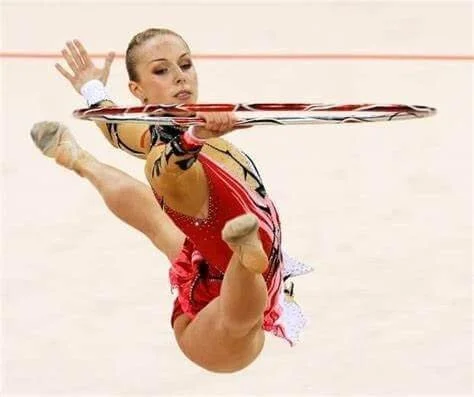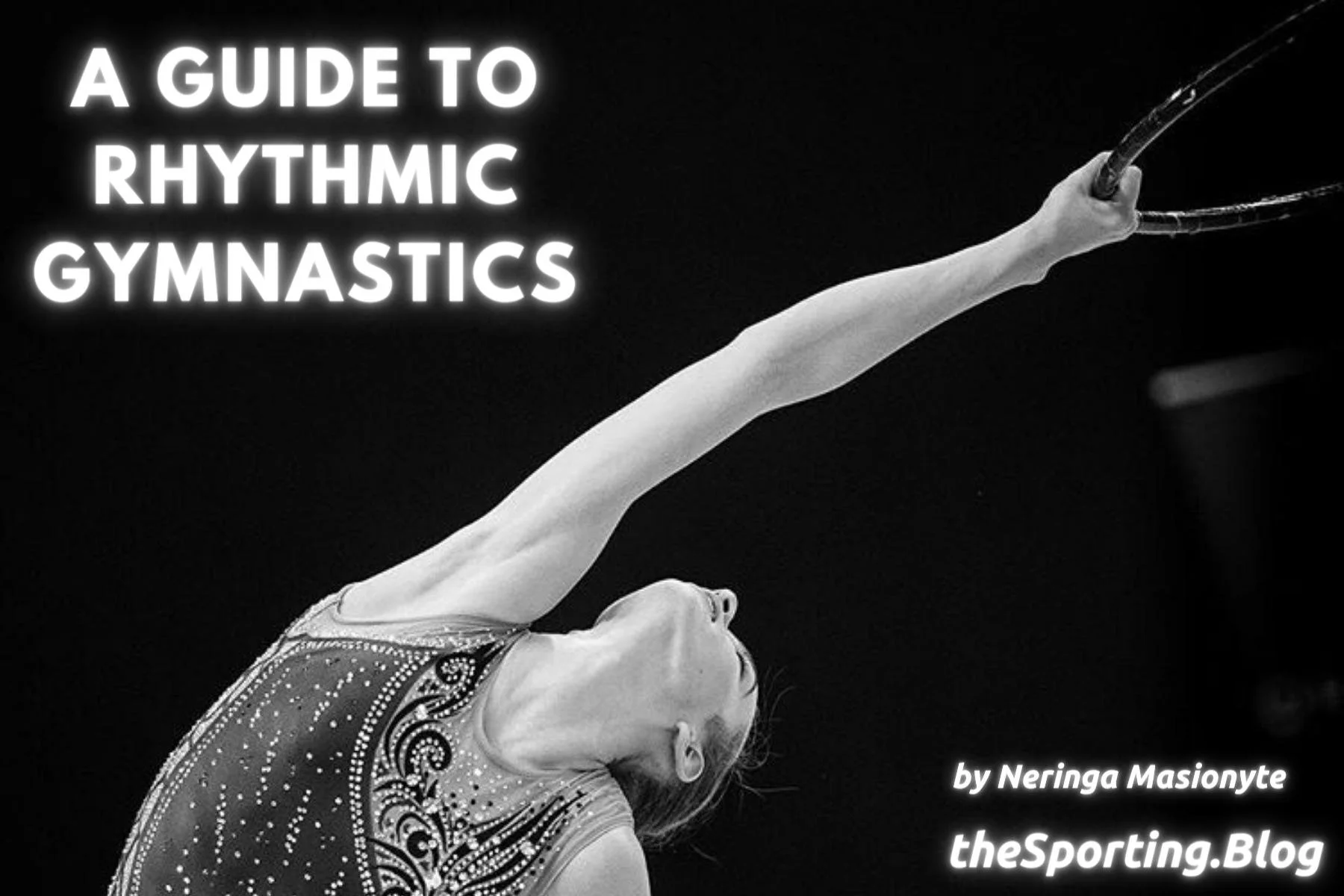A Guide to Nutrition For Rhythmic Gymnasts
Everything You Need to Know About Nutrition for Rhythmic Gymnastics
International rhythmic gymnast Neringa Masionyté explains everything you need to know about diet and nutrition for gymnasts.
A young rhythmic gymnast in action!
Rhythmic gymnastics is a sport that gives special consideration to body image.
Lean and flexible – that is the ‘perfect’ definition of a gymnast's body.
The ability to maintain this type of body for a girl during puberty requires a lot of discipline.
Setting the background to Rhythmic Gymnastics and Diet
Girls who decide to commit to gymnastics have to limit themselves when it comes to nutrition.
This is a sport where an extra pound can become the worst enemy for a gymnast, causing serious health problems, reduced physical abilities, coach concerns or even reduced marks for aesthetic abilities.
Girls typically begin rhythmic gymnastics training before they start school.
Little gymnasts are not encouraged to limit their nutrition during this time. However, their diet gets more specialised as they reach the ages of 8 and 10.
Food is picked in such a way that the junior gymnast's body will receive the required nutritional support, vitamins and microelements for growth and development.
However, a calorie deficit is highly encouraged, to avoid gaining weight.
By the time gymnasts reach the competitive level, their diet becomes even more strict.
Let’s take a look at what it takes to look like an elite rhythmic gymnast!
The Rhythmic Gymnast Diet
A disciplined diet does not mean starving yourself.
As becoming an elite rhythmic gymnast requires a lot of hard and challenging training, a balanced diet is a must.
Every athlete should ensure that they consume adequate amounts of protein, carbs and even fats.
The most important rule – no junk food.
At first glance, it looks like a balanced diet that everyone should follow.
However, let‘s keep in mind that these are young children, already experiencing demanding training sessions and having to refuse any treats.
That is why not everyone can call themselves an elite athlete.
Another important thing about rhythmic gymnasts' nutrition is eating time.
The diet consists of structured, frequent and small-portioned meals 1.5 to 2 hours before training, and no later than 2 hours before bed.
During competitions, a meal should be consumed 2.5–3 hours before stepping on the carpet.
Gymnasts typically eat carbohydrates for breakfast and proteins for lunch. Vegetables and fruits should make up the majority of dinner.
Let’s go into a bit more detail about carbohydrates, proteins and fats.
Carbohydrates
Carbohydrates are an essential nutrient for rhythmic gymnasts.
They provide the body with glucose, which is used for energy during training and competition.
Carbohydrates are especially important to sustain the optimal level of energy for the routines in rhythmic gymnastics.
Rhythmic gymnasts should consume complex carbohydrates like whole grains, legumes, fruits and vegetables.
Simple carbohydrates, like those found in candy and soda, have to be limited, as they can lead to a quick spike in blood sugar levels followed by a crash in energy. These foods can also have an effect on gymnasts’ ‘perfect’ body image.
Complex carbohydrates provide a steady release of energy that can last for several hours, and they can help rhythmic gymnasts maintain a good level of energy throughout their routines.
Protein
Protein is another essential nutrient for rhythmic gymnasts.
Protein is necessary for muscle growth and repair, and it is important for the maintenance of a healthy immune system.
Rhythmic gymnasts should consume lean protein sources like chicken, fish, tofu and legumes.
Protein supplements can also be useful, especially for athletes who are training at a high level.
Protein supplements should not be relied on as the primary source of protein, and they should be used in conjunction with a balanced diet that includes whole foods.
Check out our take on the best types of protein to eat post workout
Fats
Fats are also an important nutrient for rhythmic gymnasts.
Healthy fats are necessary for the absorption of fat-soluble vitamins, like vitamins D and E, and they are essential for brain function.
Rhythmic gymnasts should consume healthy fats like those found in nuts, seeds, avocados and fatty fish like salmon.
It is important to limit the intake of unhealthy fats like those found in fried foods, baked goods and processed snacks.
Fruits and vegetables
In addition to these macronutrients, rhythmic gymnasts should consume plenty of fruits and vegetables.
These foods are rich in vitamins, minerals and antioxidants, which can help to support immune function and promote overall health.
Fruits and vegetables are also great sources of fibre, which can help to keep the digestive system healthy.
Micronutrients
Youth athletes who do not consume a diet rich in a variety of nutrient-dense meals run the danger of an iron or calcium deficiency.
Gymnasts are particularly in danger of vitamin D deficiency due to the indoor nature of the sport. It is highly advised to check vitamin D and iron levels regularly.
Water
It is important for rhythmic gymnasts to stay hydrated by drinking plenty of water before, during and after training and competition.
Dehydration can lead to fatigue, dizziness and poor performance.
Rhythmic gymnasts should aim to drink at least 8-10 cups of water per day, and they should drink more if they are training in hot or humid conditions.
Nutrition on competition day
The nutrition of a rhythmic gymnast on competition day plays a crucial role in their performance.
By fueling their bodies with the right nutrients and staying hydrated, they can perform at their best and achieve their goals.
The first step is to ensure that they are properly hydrated. Rhythmic gymnasts must drink plenty of water before and after their routines to maintain their energy levels and prevent dehydration.
However, it is important to control water consumption during routines, so the gymnasts will not feel weighed down by the water.
To fuel their bodies for the physical demands of their routines, rhythmic gymnasts typically consume a meal rich in complex carbohydrates a few hours before their competition.
This may include wholegrain bread or pasta, fruits, vegetables and lean protein sources such as chicken or fish.
Carbohydrates provide sustained energy, while protein helps to repair and rebuild muscles.
Extra snacks throughout the day are essential, as the competition usually overlaps with one of the two main meals.
This may include fruits, nuts and granola bars for quick energy.
It is important that these snacks are easily digestible and not too heavy, as gymnasts do not want to feel weighed down during their routines.
Finally, rhythmic gymnasts need to work with a qualified nutritionist or dietician to develop a personalised nutrition plan that takes into account their individual needs and goals.
A qualified nutritionist or dietician can help to determine the appropriate amount of macronutrients, micronutrients and calories needed to support their performance and overall health.
They can also provide guidance on meal planning and supplementation, helping to ensure that their diet is balanced and nutrient-rich.
Read more content about training on our fitness blog!









